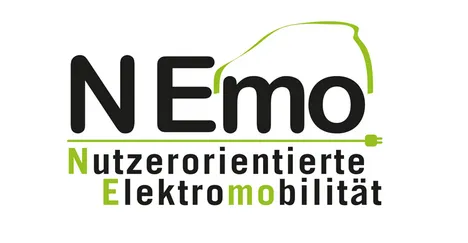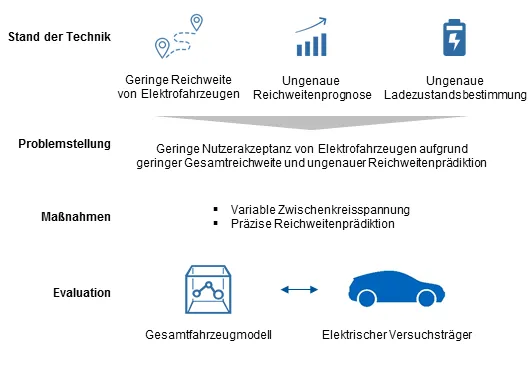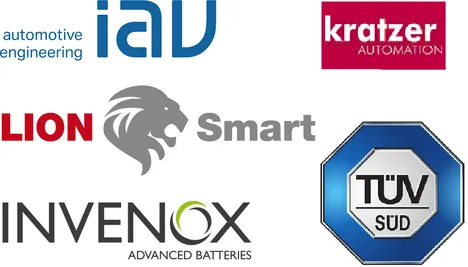
Electromobility offers a great opportunity to successively reduce conventional vehicle drives in the coming years and to enable low-emission or locally emission-free mobility. The automotive industry, especially the Bavarian manufacturers, have been able to demonstrate impressively in recent years with the introduction of several models that battery electric vehicles can be placed on the market in a technically and also economically viable manner. Despite all the technical innovations, the sales figures, especially among private individuals, are not yet sufficient to reach the federal government's target (1 million electric vehicles in 2020). The low overall range and, in particular, also an unreliable range forecast deter many potential customers. The research project "User-Oriented Electric Mobility - NEmo" focuses on these two deficits and investigates selected questions on how the user acceptance of electric vehicles can be increased.
Problem
- Low user acceptance due to unreliable range prediction and low range of electric vehicles.
- High power dissipation in electric powertrains
- Low interconnectivity of individual components
- Complex manufacturing processes
- Components often originate from the industrial environment and are poorly adapted to the automobile
Goal
The main objective of the NEmo research project is to give Bavarian research in the field of electromobility a head start in terms of knowledge, with the aim of implementing the results generated commercially and thus securing and strengthening Bavarian research institutions and companies in global competition. At the same time, the aim is to strengthen networking between the academic and industrial partners and thus to better exploit the existing potential. At the research level, the focus is on increasing user acceptance as a core objective. This is to be achieved in particular through an increase in range and a higher prediction accuracy of the remaining range. The increase in range is to be achieved through a more efficient drive with variable DC link voltage. To this end, innovative systems and algorithms are to be implemented in a prototype vehicle and their benefits validated in driving tests and simulations. Furthermore, the Bavarian population is to be brought into contact with the research through a high-profile demonstration drive in order to help reduce uncertainties and prejudices against electric vehicles.
Implementation
The NEmo research project aims to develop solution concepts for two core problems that electromobility is currently experiencing during its market launch. These are the low overall range and the inaccurate range prediction that has so far been inherent in both research and series electric vehicles. In particular, the interaction of the user with the vehicle will also be brought to the fore.

The total range can be increased by increasing the efficiency of the electric drive train. The DC link voltage, which in previous electric vehicles is used exclusively as a constant source voltage for the battery, can be used as an adjustment screw for this purpose. Preliminary work has shown that this can increase the overall efficiency by up to 10%. In the NEmo research project, the concept of the variable DC link voltage is now to be further researched. This includes, in particular, a detailed comparison of the two possible concepts (DC/DC converter and battery pack circuit) and a precise analysis of the respective applications. Furthermore, the variable DC link voltage is to be further researched with regard to its behaviour in the combination of battery, power electronics and motor, and possible adjusting screws for an increase in efficiency are to be analysed. Possible operating strategies are also unexplored and should also be an important aspect of this research project, especially as they are directly perceived by the user.
For increased user acceptance, a more accurate range forecast is also indispensable. Current electric vehicles only use a small part of the available information to calculate the range, and the results are just as inaccurate. In the NEmo research project, therefore, highly accurate data from the driver, vehicle, drive train and environment are to be linked together to calculate the remaining range and their mutual dependencies are to be researched. With the help of a more precise range prediction, routes can be planned more reliably, existing charging stations can be approached safely and thus the total range can be indirectly increased. In addition, the charging stroke of the energy storage device can be better utilised and the usable energy increased accordingly.

Industry partners:
- IAV GmbH, München
- Kratzer Automation AG,Unterschleißheim
- LION Smart GmbH,
- Garching TÜV SÜD AG, Garching
- Invenox GmbH, Garching
Sponsored by Bayrischen Forschungsstiftung

